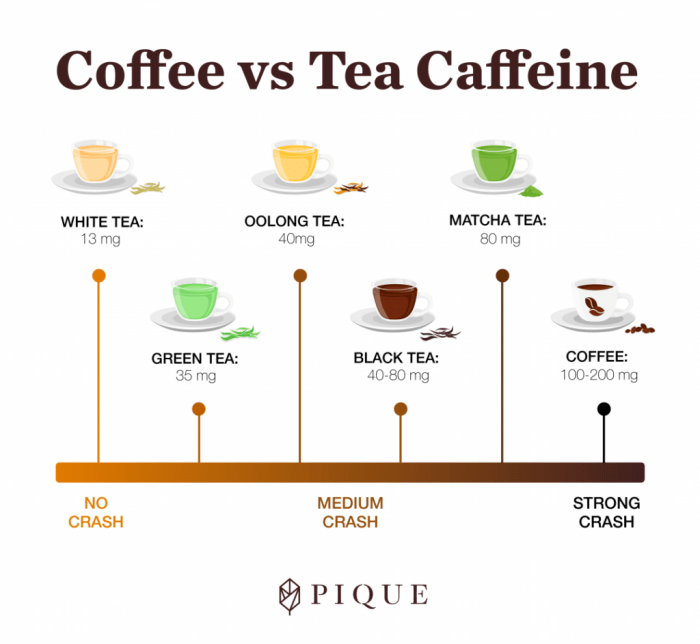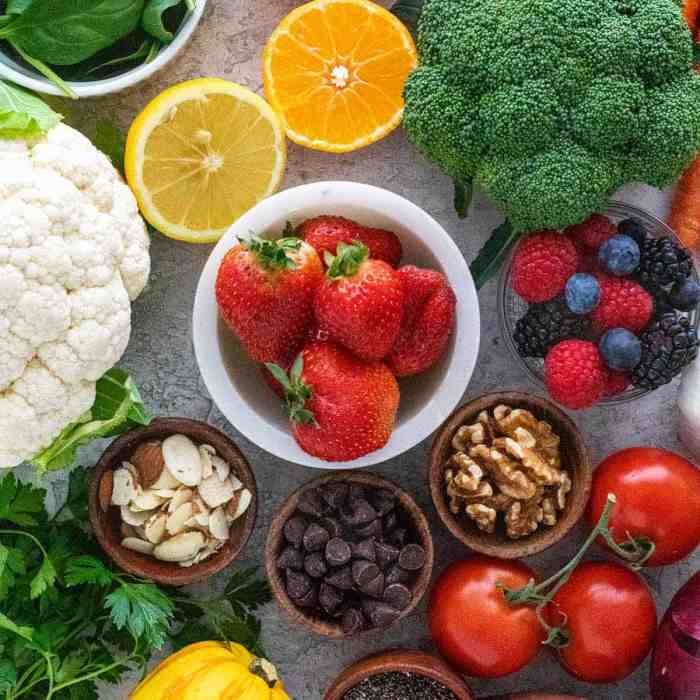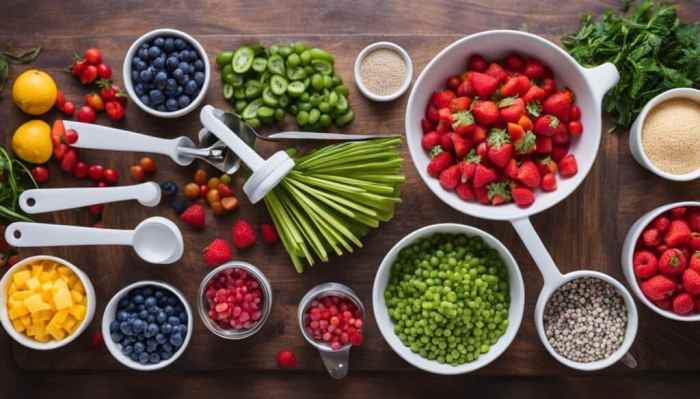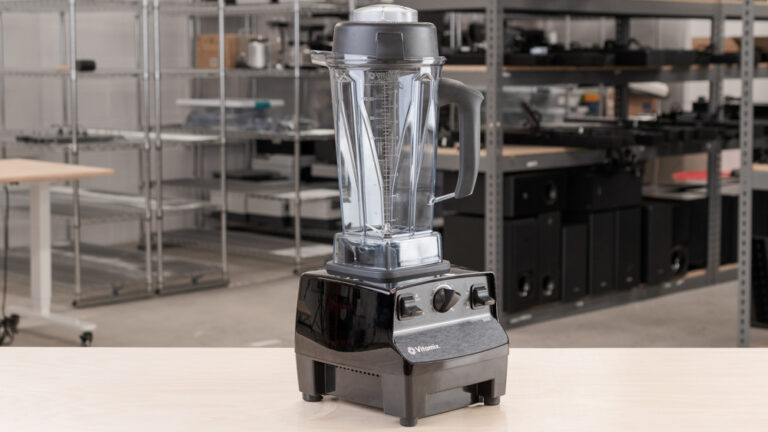Coffee Vs. Tea Which Boosts Energy?
Coffee vs. Tea: Which Boosts Energy? This in-depth comparison delves into the caffeine content, stimulating effects, absorption rates, and impact on both physical and cognitive performance of these popular beverages. We’ll explore how various factors, including brewing methods and individual differences, influence the energy boost each provides.
From the subtle nuances of different tea types to the potent kick of espresso, this analysis provides a comprehensive overview. We’ll also touch on the cultural significance of coffee and tea and examine potential health considerations.
Caffeine Content Comparison
Caffeine, a widely consumed stimulant, plays a significant role in determining the energy boost derived from coffee and tea. Understanding the variations in caffeine content across different types and preparation methods is crucial for making informed choices. This section delves into the comparative caffeine levels in various coffee and tea types.Brewing methods and preparation significantly influence the caffeine content in both coffee and tea.
Factors like the type of bean, water temperature, brewing time, and the tea’s steeping time all contribute to the final caffeine concentration.
Caffeine Content in Coffee
Coffee beans are the primary source of caffeine in coffee beverages. The caffeine content in coffee varies depending on the bean type, roast level, and brewing method. Different brewing methods extract varying amounts of caffeine.
| Coffee Type | Caffeine Content (mg) |
|---|---|
| Espresso | 60-80 |
| Drip Coffee | 90-150 |
| Instant Coffee | 30-60 |
The table above provides a general range for caffeine content. Factors like bean origin and roast level can affect the specific caffeine content. For instance, darker roasts may result in slightly lower caffeine levels.
Caffeine Content in Tea
Tea, in various forms, offers a range of caffeine levels. The caffeine content varies considerably between different types of tea.
| Tea Type | Caffeine Content (mg) |
|---|---|
| Black Tea | 40-60 |
| Green Tea | 20-40 |
| Herbal Tea | 0 |
Herbal teas, unlike black or green tea, do not contain caffeine. These infusions typically contain herbs and spices that offer various health benefits. It is important to note that even within black and green tea categories, specific varieties and preparation methods can influence the caffeine content. For example, a longer steeping time for black tea might yield a slightly higher caffeine concentration.
The Role of Other Stimulants
Beyond caffeine, other compounds contribute to the perceived energy boost from coffee and tea. Understanding their individual and combined effects provides a more nuanced perspective on the stimulant experience. These additional stimulants, while often less potent than caffeine, can influence the overall impact on energy levels and alertness.The presence of other stimulants, like theobromine and theanine, subtly modifies the experience of caffeine, creating a unique sensory response in each beverage.
This complex interplay of stimulants contributes to the diverse range of perceived effects and individual responses.
Theobromine in Chocolate and Coffee
Theobromine, found in chocolate and coffee, acts as a mild stimulant, sharing some similarities with caffeine but with a distinct profile. It promotes a sense of well-being and can contribute to a feeling of increased energy, though its impact is typically less pronounced than caffeine’s. Theobromine is a smooth, less intense stimulant compared to caffeine, and its effects on alertness are milder.
Theanine in Tea
Theanine, a unique amino acid primarily found in tea, possesses a calming effect while simultaneously enhancing alertness. This paradoxical combination of qualities contributes to a sense of relaxation without drowsiness. This contrasts with the more direct, and often more intense, stimulant effects of caffeine and theobromine. Theanine’s influence on the brain’s neurotransmitters is thought to contribute to this subtle interplay of relaxation and focus.
Combined Effects of Stimulants
The synergistic effects of combining caffeine with other stimulants, like theobromine and theanine, can be noticeable. For example, the mild stimulation of theobromine in a cup of chocolate coffee can enhance caffeine’s alertness effect without the potentially overwhelming feeling of jitters. In contrast, the calming properties of theanine in tea can temper the stimulating effects of caffeine, resulting in a more balanced and focused energy boost.
Differences in Coffee and Tea
The delivery mechanism and accompanying compounds influence the impact of stimulants. In coffee, caffeine is the primary stimulant, often accompanied by smaller amounts of theobromine. This combination typically results in a more focused and intense energy boost, potentially accompanied by a higher degree of alertness. In tea, the blend of caffeine and theanine produces a more balanced effect.
The theanine contributes to a calmer and more sustained energy response, often associated with improved focus and a reduced risk of jitters.
Bioavailability and Absorption
The absorption of caffeine, a crucial factor in its energy-boosting effect, varies depending on the source. Understanding how the body processes caffeine from different beverages like coffee and tea is essential for determining their relative energy impact. This section delves into the mechanisms of caffeine absorption, comparing coffee and tea, and highlighting the influential factors involved.The body absorbs caffeine through the digestive tract.
Once ingested, caffeine is rapidly absorbed into the bloodstream, primarily from the small intestine. The rate and extent of absorption depend on several variables, including the food consumed alongside the beverage, the brewing method, and individual metabolic differences.
Caffeine Absorption Rate in Coffee and Tea
The rate at which caffeine is absorbed from coffee and tea differs slightly, although the overall absorption mechanism remains similar. While both beverages contribute to a caffeine influx into the bloodstream, factors like the presence of other compounds in tea can potentially influence the rate of absorption. Factors that affect the absorption of caffeine include food intake, brewing method, and individual metabolism.
Factors Affecting Absorption Rate
Several factors play a significant role in how quickly and efficiently the body absorbs caffeine from coffee and tea.
- Food Intake: Consuming food with coffee or tea can slow down caffeine absorption. The presence of fats and proteins in a meal can create a physical barrier, leading to a more gradual release of caffeine into the bloodstream. For instance, consuming coffee on an empty stomach typically leads to faster absorption than consuming it with a meal.
This delayed absorption, while not necessarily diminishing the overall caffeine effect, can lead to a more sustained energy release.
- Brewing Method: The brewing method for both coffee and tea can influence the caffeine concentration and subsequent absorption rate. For example, a stronger brewed coffee, with a higher concentration of caffeine, might lead to a quicker absorption compared to a weaker brew. Similarly, different tea brewing methods and steeping times can alter the amount of caffeine extracted from the leaves.
- Individual Metabolism: Individual metabolic differences also significantly impact caffeine absorption. Factors like age, gender, and overall health status can affect how efficiently the body processes and eliminates caffeine. For instance, individuals with faster metabolisms may experience a quicker rise and fall in caffeine levels compared to those with slower metabolisms.
Comparison of Absorption Rates
While both coffee and tea provide caffeine, their absorption rates can vary. In general, caffeine from coffee is absorbed slightly faster than from tea. This is due to the different chemical compounds and the presence of certain compounds in tea. For instance, tannins in tea can bind to caffeine, potentially slowing down its absorption rate. However, these differences are often subtle and may not be noticeable in everyday consumption.
| Beverage | Absorption Rate | Factors Influencing Absorption |
|---|---|---|
| Coffee | Generally slightly faster | Higher caffeine concentration in some brewing methods, absence of binding compounds. |
| Tea | Generally slightly slower | Presence of tannins, which can bind to caffeine, variability in brewing methods and caffeine concentration. |
Impact on Physical Performance
The impact of coffee and tea on physical performance is a complex interplay of various factors, including caffeine content, individual metabolism, and the specific physical activity being performed. While both beverages can offer benefits in certain contexts, their effects can vary significantly depending on the individual and the type of exercise.Understanding how coffee and tea affect different performance metrics, like endurance and reaction time, is crucial for athletes and individuals seeking to optimize their workouts.
This section explores the influence of these beverages on workout performance and presents insights from relevant research.
Endurance Performance
The effects of caffeine on endurance performance are generally positive, but the magnitude of the impact can vary. Studies have shown that caffeine can enhance endurance by improving fat oxidation, which can lead to better sustained energy levels during prolonged exercise.
- Caffeine can improve endurance performance by increasing fat oxidation, potentially allowing athletes to exercise longer without fatigue. This effect is more pronounced in moderate to high-intensity exercise.
- The specific amount of caffeine needed for optimal endurance performance can vary greatly among individuals, with factors such as body weight, metabolism, and the individual’s sensitivity to caffeine all playing a significant role.
Reaction Time
Caffeine’s effect on reaction time is another area of interest, particularly for sports requiring quick responses. While some studies show a positive correlation between caffeine intake and improved reaction time, the effect isn’t always consistent.
- The effect of caffeine on reaction time is complex and can vary depending on factors like the type of task, the individual’s caffeine sensitivity, and the amount consumed.
- Research suggests that caffeine can improve reaction time in certain contexts, such as in situations demanding rapid decision-making during a game or competition.
Workout Performance
The impact of coffee and tea on workout performance is multifaceted and depends on factors like the type of exercise, the individual’s fitness level, and the caffeine dose. For example, a higher dose of caffeine might be more beneficial for endurance activities, whereas a lower dose might be optimal for activities demanding rapid reflexes.
Comparison of Effects in Different Contexts
The effects of coffee and tea on athletic performance differ based on the context of the activity. For instance, in endurance sports like marathon running, caffeine’s impact on fat metabolism could be beneficial. However, in sports demanding quick bursts of energy and agility, the impact might be less pronounced.
Examples of Studies
Numerous studies have investigated the effects of caffeine on athletic performance. A study published in the Journal of Strength and Conditioning Research, for example, examined the impact of caffeine on cycling performance, demonstrating a potential increase in endurance capacity. Other studies have investigated the impact of caffeine on reaction time in various sporting contexts. Finding specific studies on tea’s impact is more challenging; further research is needed in this area.
Impact on Cognitive Function
The impact of coffee and tea on cognitive function is a significant area of interest, as these beverages are consumed globally for their potential to enhance alertness and mental performance. Understanding how these beverages affect focus, memory, and overall mental clarity is crucial for making informed choices about their consumption. This section explores the effects of coffee and tea on various cognitive tasks and presents a comparative analysis of their influence on cognitive functions.The effects of caffeine and other stimulants on cognitive functions are complex and multifaceted.
Different individuals may experience varying responses based on factors like genetics, tolerance, and the specific type of beverage consumed. While both coffee and tea can improve certain cognitive functions, their effects can also vary depending on the specific task being performed.
Effects on Focus and Attention
Caffeine, a key component in both coffee and tea, is a known stimulant that can enhance alertness and focus. Studies have shown that caffeine can improve reaction time, sustained attention, and the ability to filter out distractions. This improvement in focus can be particularly beneficial in tasks requiring sustained attention, such as studying or working on complex projects.
Effects on Memory
The impact of coffee and tea on memory is a complex issue. While moderate caffeine intake can enhance working memory and short-term memory in some individuals, excessive intake may have negative consequences. For instance, studies have shown that heavy caffeine consumption may impair certain aspects of long-term memory consolidation. This highlights the importance of moderation in caffeine consumption to maximize its cognitive benefits without potential negative impacts.
Effects on Mental Clarity and Executive Function
Both coffee and tea can positively influence mental clarity and executive functions, including planning, problem-solving, and decision-making. The enhancement of these functions is often attributed to the increase in alertness and focus induced by the caffeine and other stimulants. However, individual responses to these effects can vary considerably, making it difficult to generalize the impact across the population.
Comparative Analysis of Coffee and Tea
While both coffee and tea can improve cognitive functions, their effects may differ based on the specific compounds present in each beverage. For example, coffee tends to have a more pronounced effect on alertness and focus, while tea might have a more subtle but sustained impact on cognitive functions. Furthermore, the presence of other components in tea, such as antioxidants, may contribute to overall cognitive health in addition to the effects of caffeine.
Examples of Studies on Cognitive Function
Numerous studies have investigated the impact of coffee and tea on various cognitive functions. One notable study explored the effects of coffee consumption on working memory performance in healthy adults. The results indicated a positive correlation between moderate coffee intake and improved working memory capacity. Similarly, research on the impact of green tea consumption on cognitive flexibility demonstrated an improvement in the ability to switch between different tasks.
These examples illustrate the potential benefits of these beverages on cognitive functions.
Individual Variation
Individual responses to coffee and tea, while generally similar in terms of their stimulatory effects, can differ significantly between individuals. These variations are often rooted in a complex interplay of genetic predispositions, metabolic profiles, and existing health conditions. Understanding these factors is crucial to appreciating the personalized impact of these beverages on energy levels and overall well-being.Individual variation in caffeine metabolism and tolerance plays a significant role in how effectively coffee and tea boost energy.
This is not merely a matter of personal preference; it’s a physiological response influenced by diverse factors. The amount of caffeine absorbed and its subsequent effect on the body can differ considerably from person to person.
Genetic Factors
Genetic variations influence how the body processes caffeine. Some individuals possess genetic variations that lead to faster or slower caffeine metabolism. Those with faster metabolisms may experience a quicker energy boost but also a shorter duration of effect, potentially requiring more frequent consumption to maintain the desired level of stimulation. Conversely, individuals with slower metabolisms may experience a more sustained energy effect, but the initial response might be less pronounced.
For example, a study published in the journal “Pharmacogenomics” investigated the relationship between caffeine metabolism genes and individual responses to coffee. The findings highlight the impact of genetic polymorphisms on caffeine clearance rates.
Metabolic Differences
Metabolism, the process of converting food and beverages into energy, also affects the body’s response to caffeine. Factors such as age, body weight, and overall health status can influence caffeine metabolism. For example, individuals with certain metabolic disorders may process caffeine differently than those without such conditions. Furthermore, the presence of other medications or substances can alter caffeine metabolism, potentially leading to either increased or decreased energy levels.
Health Conditions
Pre-existing health conditions can significantly impact the effects of coffee and tea. Conditions such as anxiety disorders, heart conditions, and sleep disorders can influence how the body responds to caffeine. For example, individuals with anxiety may experience heightened anxiety symptoms with caffeine consumption, while those with heart conditions might experience increased heart rate and blood pressure. Furthermore, individuals with pre-existing sleep issues may find that coffee or tea consumption exacerbates their symptoms, potentially leading to insomnia.
Caffeine Tolerance
Caffeine tolerance, the body’s decreased responsiveness to caffeine over time, is a critical aspect of individual variation. Repeated exposure to caffeine can lead to a diminished response to its stimulating effects. This is often a factor in the need for increasing coffee or tea intake to maintain the same level of energy. In essence, tolerance levels can be influenced by consistent caffeine consumption patterns, potentially leading to fluctuations in energy responses.
Conclusion
Understanding individual variations in caffeine metabolism, tolerance, and the influence of pre-existing health conditions is crucial for optimizing the energy benefits of coffee and tea. A personalized approach to consumption can lead to a more effective and safe experience. By considering these factors, individuals can tailor their coffee and tea intake to better manage their energy levels and overall well-being.
Health Considerations: Coffee Vs. Tea: Which Boosts Energy?
Evaluating the health impacts of coffee and tea consumption requires a nuanced perspective, acknowledging both potential benefits and drawbacks. While both beverages can contribute positively to well-being, excessive intake can also present challenges. Understanding these nuances is crucial for making informed choices about daily consumption.
Potential Health Benefits and Drawbacks, Coffee vs. Tea: Which Boosts Energy?
A comparison of potential health benefits and drawbacks associated with coffee and tea consumption reveals a complex interplay of factors. Different types of coffee and tea may exhibit varying characteristics, influencing their overall impact on health.
| Benefit/Drawback | Coffee | Black Tea | Green Tea | Herbal Tea |
|---|---|---|---|---|
| Potential Benefits | Improved mood, enhanced cognitive function, reduced risk of certain diseases (e.g., type 2 diabetes, Parkinson’s disease). | Rich in antioxidants, potential benefits for cardiovascular health, aiding digestion, and improving mood. | High antioxidant content, potential benefits for cardiovascular health, and weight management. | Generally low in caffeine, offering potential benefits like stress reduction, aiding digestion, and promoting relaxation. |
| Potential Drawbacks | Increased anxiety, insomnia, gastrointestinal issues (e.g., heartburn, acid reflux), potential for dependence. | Contains caffeine, potential for insomnia, anxiety, or gastrointestinal discomfort for sensitive individuals. | Contains caffeine, though generally less than coffee, potential for insomnia or anxiety. | Generally low in caffeine, potential for allergic reactions to specific herbs. |
Side Effects of Excessive Consumption
Excessive consumption of coffee or tea can lead to a range of undesirable side effects. Individual responses vary, but common concerns include:
- Gastrointestinal issues: Excessive caffeine intake can irritate the stomach lining, leading to heartburn, acid reflux, and indigestion. For example, individuals with existing gastrointestinal conditions may experience worsened symptoms.
- Sleep disturbances: Caffeine can interfere with sleep patterns, making it challenging to fall asleep or stay asleep. This can lead to daytime fatigue and reduced cognitive function.
- Anxiety and nervousness: High caffeine intake can exacerbate anxiety and nervousness in susceptible individuals. This effect can be more pronounced in individuals with pre-existing anxiety disorders.
- Increased heart rate and blood pressure: Caffeine can temporarily elevate heart rate and blood pressure. This effect may be more pronounced in individuals with pre-existing cardiovascular conditions.
Caffeine Overdose Risks
Caffeine overdose is a serious concern, potentially leading to a range of severe health complications. Symptoms of caffeine overdose can include:
- Agitation and restlessness: Individuals experiencing caffeine overdose often exhibit restlessness and a heightened state of agitation.
- Anxiety and panic attacks: Excessive caffeine intake can trigger anxiety and panic attacks, particularly in susceptible individuals.
- Rapid heart rate and tremors: A significant increase in heart rate and the presence of tremors are common signs of caffeine overdose.
- Seizures and death: In severe cases, caffeine overdose can lead to seizures and even death, though this is rare. It’s crucial to recognize the symptoms and seek immediate medical attention.
It is important to note that the risk of caffeine overdose is significantly higher with very high doses of caffeine consumed in a short period. Consult with a healthcare professional for personalized advice.
Cultural Significance

Coffee and tea, far beyond their invigorating properties, hold deep cultural significance in numerous societies worldwide. These beverages are often intertwined with social rituals, traditions, and even religious practices, shaping consumption patterns and influencing daily life. The preparation, sharing, and enjoyment of these drinks are often more than simple acts of sustenance; they are expressions of community, hospitality, and cultural identity.
Coffee Traditions
Coffee’s widespread adoption is closely tied to cultural practices. The ritualistic preparation and consumption of coffee vary across regions, reflecting unique social customs.
- Arabian Coffee Culture: In many Arab countries, coffee houses ( qahveh khaneh) are communal spaces where people gather to socialize, discuss news, and engage in business. The meticulous preparation of coffee, often using a specific brewing method, and the communal sharing of the beverage fosters strong social bonds. Coffee is also deeply embedded in religious and social customs, representing a significant aspect of daily life.
- Turkish Coffee Culture: Turkish coffee is known for its strong, dark flavour and the unique brewing method using a cezve pot. The ritual of brewing and serving Turkish coffee is deeply ingrained in Turkish culture and often accompanies social gatherings, particularly during special occasions. The thick consistency and strong flavour of the coffee are appreciated and are part of the unique cultural experience.
- Latin American Coffee Culture: Coffee production and consumption are deeply woven into the fabric of Latin American societies. The region’s history of coffee cultivation has shaped national economies and cultural identities. The preparation and consumption of coffee often involve family gatherings, creating lasting connections and a strong sense of community. The distinctive flavour profiles and unique roasting styles contribute to the cultural appreciation of coffee in these countries.
Tea Traditions
Tea’s global presence is also marked by diverse cultural traditions. The preparation and consumption of tea often reflect the unique social values and aesthetics of a given culture.
- Chinese Tea Culture: China is renowned for its rich tea culture, with a long history of tea cultivation and processing. The elaborate tea ceremonies, focusing on the precise steps of preparing and enjoying the tea, represent a deep appreciation for the art and ritual involved. Different types of tea, with varying levels of processing and flavours, are associated with specific occasions and social settings.
The intricate process of preparing and serving the tea represents a deep-rooted respect for the art and tradition.
- Japanese Tea Ceremony (Chanoyu): The Japanese tea ceremony (Chanoyu) is a highly formalized ritual emphasizing mindfulness, respect, and harmony with nature. The ceremony involves the meticulous preparation of matcha or other types of green tea, and the atmosphere is designed to foster tranquility and spiritual connection. The intricate process of preparing and serving the tea represents a profound respect for the art and tradition.
- Indian Tea Culture: India, a major tea producer, has a long-standing tradition of tea consumption. Tea is integral to social interactions and daily routines. The preparation methods and types of tea vary across different regions and communities, reflecting the diverse cultural landscape of India. A wide variety of teas, from black to green to herbal varieties, are enjoyed throughout the country, with specific types often associated with particular occasions and regions.
Comparison of Coffee and Tea Traditions
While both coffee and tea have significant cultural roles, their traditions vary significantly across cultures.
| Feature | Coffee | Tea |
|---|---|---|
| Preparation | Often involves specific brewing methods, like pour-over, French press, or Turkish-style brewing. | Preparation methods vary widely, from simple steeping to elaborate tea ceremonies. |
| Social Context | Often consumed in coffee houses, fostering social interaction and community. | Consumed in various social settings, from home gatherings to formal ceremonies. |
| Symbolism | Can represent hospitality, community, and cultural identity. | Can symbolize respect, mindfulness, and spiritual connection. |
Brewing Methods and Their Effects
The manner in which coffee and tea are brewed significantly impacts the final product, influencing both taste and the amount of beneficial compounds extracted. Different brewing methods extract varying degrees of caffeine and other bioactive substances, resulting in distinct sensory experiences and potential energy boosts. Understanding these nuances allows individuals to tailor their brewing choices to their specific preferences and desired outcomes.
Coffee Brewing Methods and Their Impact
Various coffee brewing methods offer distinct advantages and disadvantages. The choice of method influences the taste profile, the strength of the brew, and the level of caffeine extraction. Different methods extract different amounts of caffeine and compounds that affect the flavor.
- Pour Over: This method, often using a filter, allows for a controlled flow of hot water over the coffee grounds. It typically results in a cleaner, more nuanced flavor profile than other methods, often emphasizing the acidity of the coffee beans. The extraction is generally moderate, producing a balanced caffeine content.
- French Press: This method involves steeping coffee grounds in hot water for a longer period. The resulting brew often has a bolder, richer flavor, with a more substantial body and a fuller mouthfeel. Longer steeping times can lead to higher caffeine extraction.
- Drip Coffee Maker: A common and convenient method, drip coffee makers use a filter to separate the coffee grounds from the brew. This process often yields a consistent, readily available cup with a medium caffeine content. The taste can range from mild to medium, depending on the beans and settings.
- Espresso: This method involves forcing hot water under high pressure through finely ground coffee. The resulting shot of espresso is highly concentrated, delivering a potent, intense flavor with a high caffeine content. The short brewing time results in a more bitter taste profile.
Tea Brewing Methods and Their Impact
Similar to coffee, tea brewing methods significantly impact the final cup. The type of tea and the brewing time are key factors in achieving the desired flavor and caffeine content.
- Steeping: For black, green, and herbal teas, steeping involves allowing the tea leaves to sit in hot water for a specified time. The extraction of caffeine and other compounds is influenced by the water temperature and steeping time. This method can yield a wide range of tastes and caffeine content.
- Infusion: This method, often used for delicate teas like white or pu-erh, involves gently pouring hot water over the tea leaves. The infusion method is typically used for a more subtle flavor profile and lower caffeine content.
- Cold Brew: While a brewing method for both coffee and tea, it involves steeping the tea or coffee grounds in cold water for an extended period. This method produces a smoother taste, with a lower caffeine content than hot brewing methods.
Comparison Table of Brewing Methods
| Brewing Method | Coffee | Tea | Caffeine Content | Taste Profile |
|---|---|---|---|---|
| Pour Over | Nuanced, clean | Subtle, balanced | Moderate | Moderate |
| French Press | Rich, bold | Robust, hearty | High | Bold |
| Drip Coffee Maker | Consistent, medium | Consistent, medium | Moderate | Mild-medium |
| Espresso | Intense, concentrated | N/A | High | Strong, bitter |
| Steeping (Black Tea) | N/A | Strong, malty | Moderate-High | Strong |
| Steeping (Green Tea) | N/A | Subtle, grassy | Moderate | Subtle |
Elaboration on Brewing Methods
The specific brewing method directly affects the extraction process. Factors like water temperature, grind size, steeping time, and water pressure all contribute to the final product. Careful consideration of these factors allows one to tailor the brewing experience to their preferences and goals.
Closing Summary
In conclusion, while caffeine content plays a significant role, the ultimate energy boost from coffee or tea depends on individual factors, brewing methods, and desired effects. Ultimately, the best choice is a personalized one, based on your individual needs and preferences.
Popular Questions
What is the difference in caffeine content between brewed coffee and instant coffee?
Brewed coffee typically has a higher caffeine content than instant coffee, due to the longer steeping time allowing for greater extraction of caffeine. The difference can vary significantly depending on the brewing method and coffee bean variety.
How does the type of tea affect its caffeine content?
Different tea types have varying caffeine levels. Black tea generally has a higher caffeine content than green tea, while herbal teas typically contain no caffeine.
Can food intake affect how quickly caffeine is absorbed?
Yes, food intake can affect caffeine absorption. Consuming caffeine with a meal can slow down absorption, whereas consuming it on an empty stomach may lead to quicker absorption and potentially more pronounced effects.
What are some potential side effects of consuming too much caffeine?
Excessive caffeine consumption can lead to symptoms such as anxiety, restlessness, insomnia, and heart palpitations. It’s essential to consume caffeine in moderation.





